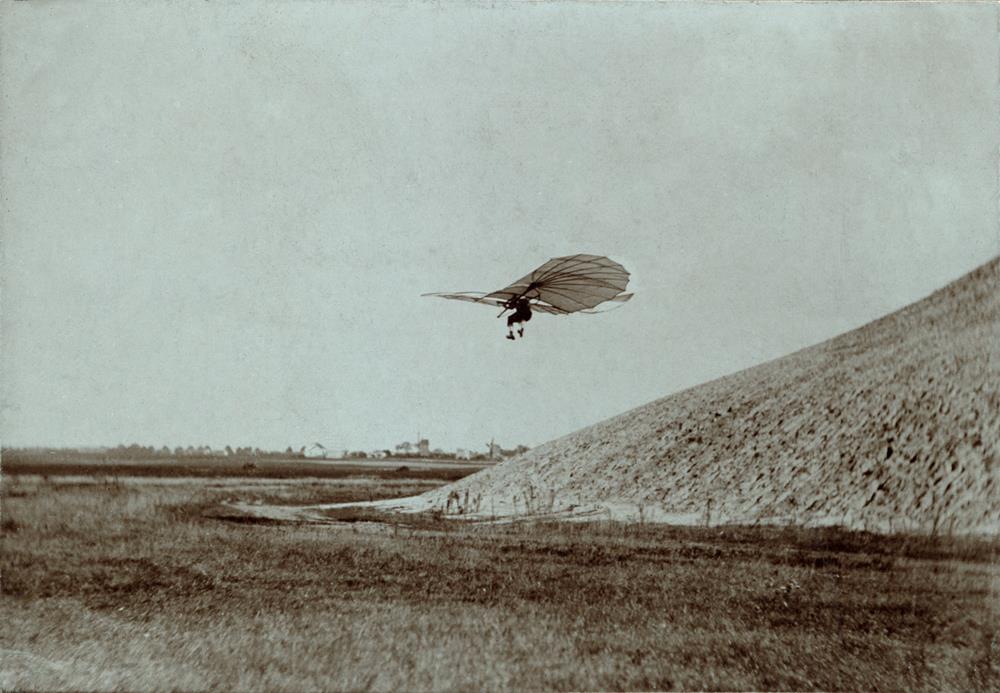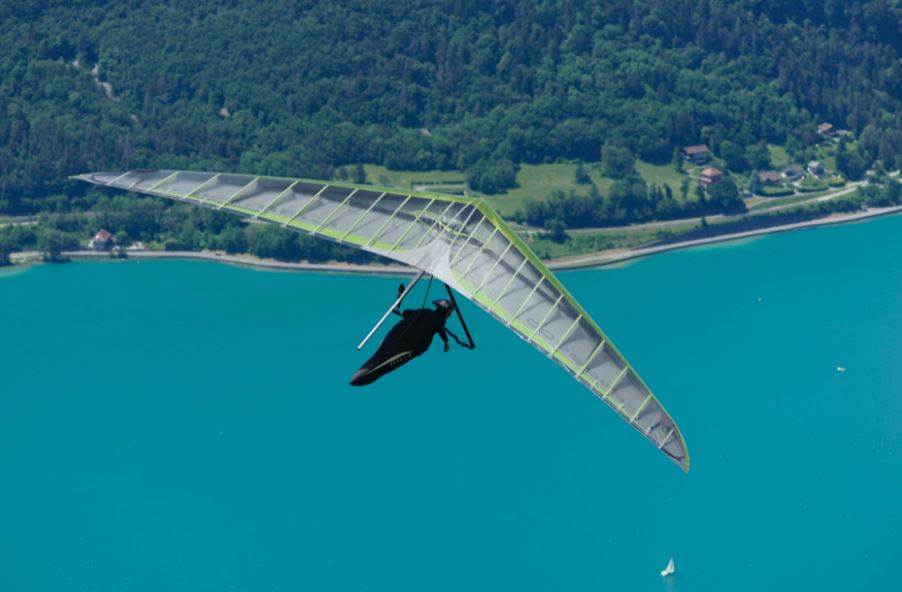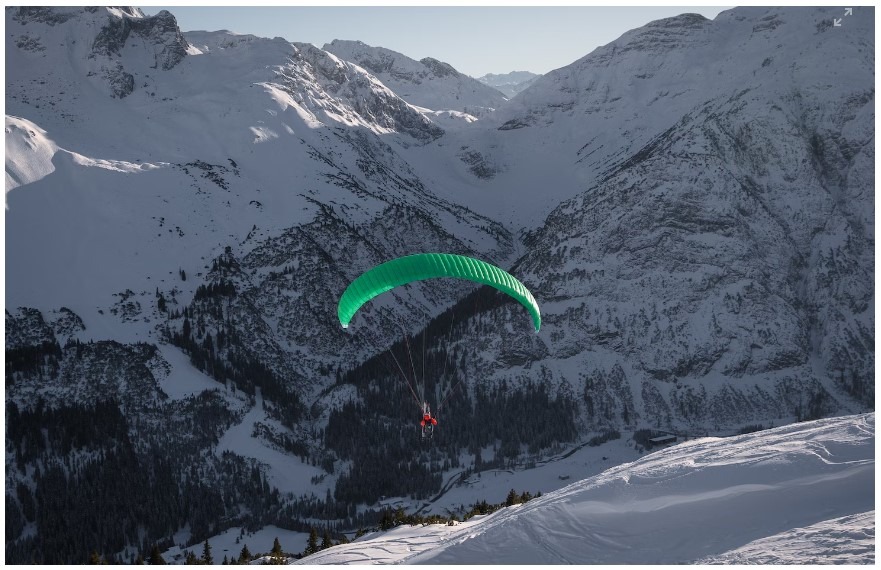The History of Hang Gliding

The dream of human flight has been alive for centuries, and hang gliding brought that dream closer to reality. This unique sport allows individuals to soar through the sky using simple yet carefully designed gliders. Continue reading as we explore the history of hang gliding and its rise in popularity.
What is Hang Gliding?
Before we get to the history of hang gliding, let us first discuss what exactly this sport is. Hang gliding is an air sport where a person flies a lightweight glider without any motor. The pilot is suspended in a harness and controls the glider by shifting their body weight.
The wings of the glider are designed to catch the wind, which then allows the pilot to glide through the air. Unlike powered aircraft, hang gliders rely on wind currents and thermals to stay aloft.
Early Concepts of Gliding
Human fascination with flight stretches back to ancient times. Stories like that of Icarus show how people have long dreamed of soaring through the skies. In the 15th century, Leonardo da Vinci sketched designs for flying machines that were inspired by birds. His drawings, though never built, showed a deep interest in understanding how flight might be possible.
One of the first to experiment with gliders was Abbas Ibn Firnas in the 9th century. He built a rudimentary glider in Córdoba, Spain, and made a short flight from a tower. Though his attempt resulted in a crash landing, his work inspired later inventors.
Another early pioneer in gliding was George Cayley, an English engineer who lived from 1773 to 1857. Cayley is often called the "father of aviation" for his work on fixed-wing gliders. In 1804, he built a small glider, marking the first controlled flight of a heavier-than-air craft.
The Work of Otto Lilienthal

Otto Lilienthal is often called the father of modern aviation due to his groundbreaking work in gliding. Born in 1848 in Germany, Lilienthal had a lifelong passion for flight. He studied the flight of birds and used this knowledge to build his first gliders in the early 1890s. His aim was to develop a machine that would allow humans to fly using only natural forces like wind and gravity.
In 1891, Lilienthal achieved his first successful glider flight. Over the next five years, he designed and tested more than 16 different gliders. His most famous glider, known as the monoplane glider, was made of lightweight materials like bamboo and fabric.
Lilienthal made more than 2,000 flights from a man-made hill near Berlin, where he demonstrated controlled, sustained gliding for the first time in history. These flights were documented in photographs, which later inspired other aviation pioneers.
Lilienthal's contributions were not limited to practical experiments. In 1889, he published a book titled Birdflight as the Basis of Aviation, in which he explained his theories on aerodynamics. This book became an essential reference for the Wright Brothers and other early aviation engineers. Lilienthal's work showed that controlled flight was achievable with the right understanding of lift and stability.
Post-Lilienthal Developments

After Otto Lilienthal's death in 1896, his work inspired a new generation of aviation pioneers. One of the first to build on Lilienthal's work was Octave Chanute, a French-American engineer.
In the late 1890s, Chanute developed a biplane glider that was more stable and easier to control than Lilienthal's monoplane designs. His gliders were built with materials like spruce wood, and a system of wires was used for added strength.
In 1896, Chanute successfully tested his glider on the shores of Lake Michigan. He also published books and articles about aviation, becoming a key figure in sharing knowledge and encouraging innovation among early aviators.
The Wright Brothers were also heavily influenced by Lilienthal's and Chanute's work. In 1900, they began experimenting with their own gliders in Kitty Hawk, North Carolina. Their goal was to improve control over the glider's movement, especially in terms of pitch, yaw, and roll.
By 1902, the brothers had developed a glider with a movable rudder and wing-warping system that allowed them to achieve controlled, powered flight by 1903. The Wright Brothers' success is often seen as the culmination of Lilienthal's ideas and Chanute's practical improvements.
The Revival of Gliding in the Mid-20th Century
In the mid-20th century, gliding experienced a revival as both a sport and a field of study. The years following World War II saw a renewed interest in gliders. Much of this was driven by the wartime use of gliders for military operations and the technological advancements that came out of the war.
World War II
During World War II, military forces used gliders to transport troops and equipment. These gliders were often large and had no engines. The most famous of these was the Waco CG-4A, used by the United States during the Normandy invasion in 1944. After the war, many military pilots became interested in gliding as a recreational sport.
1950s and 1960s
In the 1950s and 1960s, the sport of gliding began to take off in Europe and the United States. The creation of the International Gliding Commission in 1951 helped standardize rules for competitions and set guidelines for glider certification. By the late 1950s, advancements in materials and design, such as the use of aluminum and fiberglass, made gliders more efficient and easier to fly.
One of the key figures during this time was Paul MacCready, an American engineer who made a name for himself in competitive gliding. In 1956, MacCready won the world gliding championship in France. His innovative approach to glider design led to further improvements in the field. MacCready also went on to develop the Gossamer Condor in the 1970s, a human-powered aircraft that set records in flight.
Another important figure was Francis Rogallo, an engineer at NASA who, in the 1950s, invented the Rogallo wing. This flexible wing design was initially developed as a possible recovery system for spacecraft but soon became popular for use in hang gliding and sports aviation. By the 1960s, Rogallo's wing was adapted for hang gliders, helping to fuel the growth of both hang gliding and paragliding as sports.
Modern Hang Gliding Movement

The modern hang gliding movement began in the 1960s and brought the sport to a broader audience. It was during this time that engineers and enthusiasts began developing safer and more efficient gliders. The sport grew rapidly, with new designs and materials allowing for longer and more controlled flights.
John Dickenson
One of the key figures in the rise of modern hang gliding was John Dickenson, an Australian inventor. In 1963, Dickenson adapted the Rogallo wing, originally developed by NASA engineer Francis Rogallo, to create a stable and steerable hang glider. His design was simple and effective.
Dickenson's hang glider featured a triangular control frame that allowed pilots to control the glider by shifting their weight. This design became the standard for hang gliders and is still used today.
The Rogallo wing had originally been designed for space capsule recovery but found its place in recreational aviation. As Dickenson's glider became popular, hang gliding clubs began forming in Australia, Europe, and the United States.
The 1970s and Beyond
In the 1970s, the sport gained traction with the first organized competitions and commercial production of hang gliders. Companies began manufacturing hang gliders for the growing number of enthusiasts, and the sport moved from being an experimental activity to a mainstream recreational pursuit.
In 1971, the United States Hang Gliding Association (USHGA) was formed, marking the formal establishment of the sport in the U.S. The organization created safety guidelines and worked to standardize equipment. Competitions like the world hang gliding championships began attracting pilots from around the globe. The first such event was held in 1976 in Kossen, Austria, where dozens of pilots competed.
The sport of hang gliding continued to grow throughout the 1970s and 1980s. Advances in materials such as aluminum and Dacron made gliders lighter and more durable.
Pilots began setting records for distance and altitude, pushing the boundaries of what was possible. One notable achievement was by hang glider pilot Larry Tudor, who set a world distance record of 300 miles in 1983.
By the 1990s, hang gliding had become a well-established global sport with a passionate community of pilots. Modern hang gliding has evolved into both a recreational and competitive activity, with advancements in technology continually improving the safety and performance of the gliders. Today, hang gliding remains a popular way for people to experience the thrill of flight.
Conclusion
Hang gliding has come a long way from the early experiments with flight. From Otto Lilienthal's pioneering work in the 1890s to the rapid advancements in the 1960s and beyond, the sport has evolved into a global phenomenon. Each step in its history has brought it closer to what it is today. Hang gliding is a sport that combines technology, skill, and the human desire to fly.




